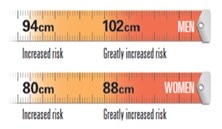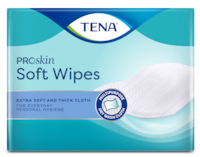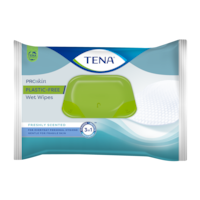Obesity is on the increase in developed countries, including Australia. In 2017-18, the Australian Bureau of Statistics' National Health Survey showed that 67.0% of Australian adults1 and 30.9% of New Zealand adults were overweight or obese.2
Obesity and Incontinence
Introduction
Talking with a client about their weight can be very difficult, as most are embarrassed, if you then add that the excess weight could be causing leakage it becomes very difficult.
Obesity is complex and requires a non-judgemental approach to gain trust from clients to discuss issues and then for them to be ready to make changes. You may be the first person to address their weight and the link to incontinence with them. The information below aims to help you as a health care professional, understand the link and how to assist your clients with this issue.

How to identify if your client is obese?
- BMI (Body Mass Index) calculation. Body fat is calculated on an individual's weight in relation to his/her height and age. A person with a BMI of 25 - 29.9 is considered overweight and a BMI > 30 is considered obese4.
- Waist circumference is also an indicator of obesity, with a measurement over 88 cm for women and over 102 cm for men, indicative of obesity3.
- A weight over 100 kg is what is termed “Bariatric” in hospitals and community settings by medical, nursing and allied health staff. This weight alerts staff that they may need to order special “bariatric” equipment for a patient with this weight (bed, armchair, wheelchair, shower chair etc.)
Obesity and Urinary Incontinence - Prevalence
- In a study of over 3,000 women, the prevalence of Urinary Incontinence (UI) was 17%, stress UI 15%, urge UI 9%, and mixed UI 7%. Irrespective of other risk indicators, BMI was positively associated with UI prevalence, particularly stress incontinence.7
- Another study reviewed 368 incontinent women and found 63% had stress UI, 27% had detrusor instability. Obesity was significantly more common in women with genuine stress incontinence and detrusor instability than in the normal population8
Obesity and Urinary Incontinence - Prevalence
- In a study of over 3,000 women, the prevalence of Urinary Incontinence (UI) was 17%, stress UI 15%, urge UI 9%, and mixed UI 7%. Irrespective of other risk indicators, BMI was positively associated with UI prevalence, particularly stress incontinence.7
- Another study reviewed 368 incontinent women and found 63% had stress UI, 27% had detrusor instability. Obesity was significantly more common in women with genuine stress incontinence and detrusor instability than in the normal population8
Why does incontinence occur due to Obesity?
Stress Incontinence
Obesity increases intra-abdominal pressures which adversely stresses the pelvic floor and can contribute to urinary stress incontinence.9
Mixed incontinence or neurogenic bladder
Obesity may also affect the neuromuscular function of the genitourinary tract, thereby contributing to incontinence9 such as urge incontinence or bladder emptying difficulties.
Functional incontinence
An inability to reach the toilet in time resulting in incontinence due to reduced mobility or environmental barriers. See link for more information here: types of incontinence.
Also see functional incontinence.
Obesity can also be linked to many co-morbidities such as:
- Heart disease
- stroke
- high blood pressure
- type 2 diabetes
- some types of cancer
- kidney disease
- back & knee pain
- breathing problems
- anxiety and depression
- sleep apnea
- gall bladder & fatty liver disease5.
Many of these co-morbidities will also exacerbate incontinence, and given these life threatening conditions incontinence is often pushed to the bottom of the list. Incontinence may not be life threatening but can be quality of life threatening.
How to raise the topic of Incontinence?
Talking about incontinence can be difficult on its own. But coupled with the issue of obesity it is even harder to raise the topic. Below are some insights into obesity, common causes of obesity and tips to raise the topic of incontinence.
Insights into Obesity
To give health care professionals some insights into how those that are obese feel, market research was conducted by Essity in 2018 (TENA manufacturer). Findings were:
- Feelings of isolation (even if have people around them)
- Guilt as feel it is their own fault
- Hate for themselves for having inflicted this situation on their family and loved ones
- Hard to lead a normal life as this is defined by what they can’t do
- Depression and hopelessness
- Self-deprecation and self-disgust – therefor often struggle with health, hygiene and skin issues
- Aware of the implications of their obesity
- Stigma and shame makes them feel like outcasts and a burden
- Many have been “fat shamed” by friends and strangers
- Their size can force can them into a “disabled” condition6
Common Causes of Excess Weight and tips to address
- Medications - Review them to ascertain if they could be a cause for weight gain and refer client to their GP to establish if weight gain could be reduced by other medication choices. Common illnesses that could have medications that contribute to weight gain are:
- Mental illness
- Diabetes
- Epilepsy
- Inflamation10
- Hormonal imbalances - Menopause, endometriosis, or possibly elevated cortisol due to an acute or chronic stress, can cause weight gain.
- Emotional eating - Identify if binge eating is occurring by discussion if possible (although many may not disclose this). Refer client to their GP for a referral to a dietician or psychologist if client is agreeable.
- Poor food choices - High fat & sugar diet, poor intake of fibre, fruits vegetables are identified during discussion, refer client to their GP for a referral to a dietician.
- Reduced mobility or exercise - refer client to their GP for a referral to an exercise physiologist, physiotherapist, or a local rehabilitation program or starting with a walking program.
- Psychological issues - There are many types of psychological factors that could impact a client’s thinking and behaviour. Ascertain if your client would be open to a discussion with their GP about a referral to a psychologist or a psychiatrist.
- Life circumstances and stages in life - These can dramatically affect one’s weight. For example, irregular hours, night duty shifts, cost or time pressures. Many may be working full time and parenting or caring for elderly parents, affecting time and energy to eat well, exercise or find motivation.
Offering support, empathy, and non- judgement advice, may go a long way to helping someone start on a weight loss journey to improve their incontinence. Read more on how to discuss incontinence.
Obesity and Skin Issues
- Dry Skin – skin can become incredibly dry due to poor circulation, poor hygiene, or lack of moisturizing.
- Excessive Moisture – this can be an issue due to sweating.
- Weight and Pressure – due to their weight they may develop pressure ulcers between skinfolds or on extremities, or pressure from tight spaces on skin (e.g. if the chair is too tight) a lack of movement, or from acid from urine and faeces due to incontinence.
- Cellulitis – a bacterial skin infection can occur due to poor hygiene.
- Other related Health Issues can cause skin problems:
- diabetes if poorly controlled can cause skin breakdowns or diabetic foot ulcers
- less blood flow in areas with heavy deposits of fat
- venous insufficiency/poor circulation to limbs
- a lack of mobility can put skin at risk
- the PH of their skin is usually higher9
The ProSkin Skincare Range
Our unique ProSkin Skincare Range can help.

How to apply our Skincare Range
Find out more about skin health.

Links to products
TENA ProSkin Slip Bariatric for overweight and obese
Designed for heavy urine leakage in bariatric care
References
- https://www.health.gov.au/internet/main/publishing.nsf/Content/Overweight-and-Obesity
- https://www.health.govt.nz/nz-health-statistics/health-statistics-and-data-sets/obesity-statistics
- https://www.health.gov.au/topics/overweight-and-obesity/bmi-and-waist
- https://www.pennmedicine.org/updates/blogs/metabolic-and-bariatric-surgery-blog/2019/april/what-does-bariatric-mean
- https://www.rethinkobesity.com/impact-of-obesity/associated-risks-of-obesity.html
- Essity market research on Obesity 2018
- Body mass index and adult female urinary incontinence S. Mommsen, A. Foldspang, World Journal of Urology December 1994, Volume 12, Issue 6, pp 319–322 https://link.springer.com/article/10.1007/BF00184112
- Obesity and urinary incontinence in women; P.Dwyer , D.M.Hay International journal of Obstetrics and Gyneacology, January 1988, https://obgyn.onlinelibrary.wiley.com/doi/abs/10.1111/j.1471-0528.1988.tb06486.x
- Urinary Stress Incontinence Among Obese Women: Review of Pathophysiology TherapyJ. M. Cummings, C. B. Rodning, International Urogynaecology Journal, January, 2000, Vol 11 Issue 1, pp 41–44; https://link.springer.com/article/10.1007/s001920050008
- https://www.urmc.rochester.edu/encyclopedia/content.aspx?contenttypeid=56&contentid=DM300










